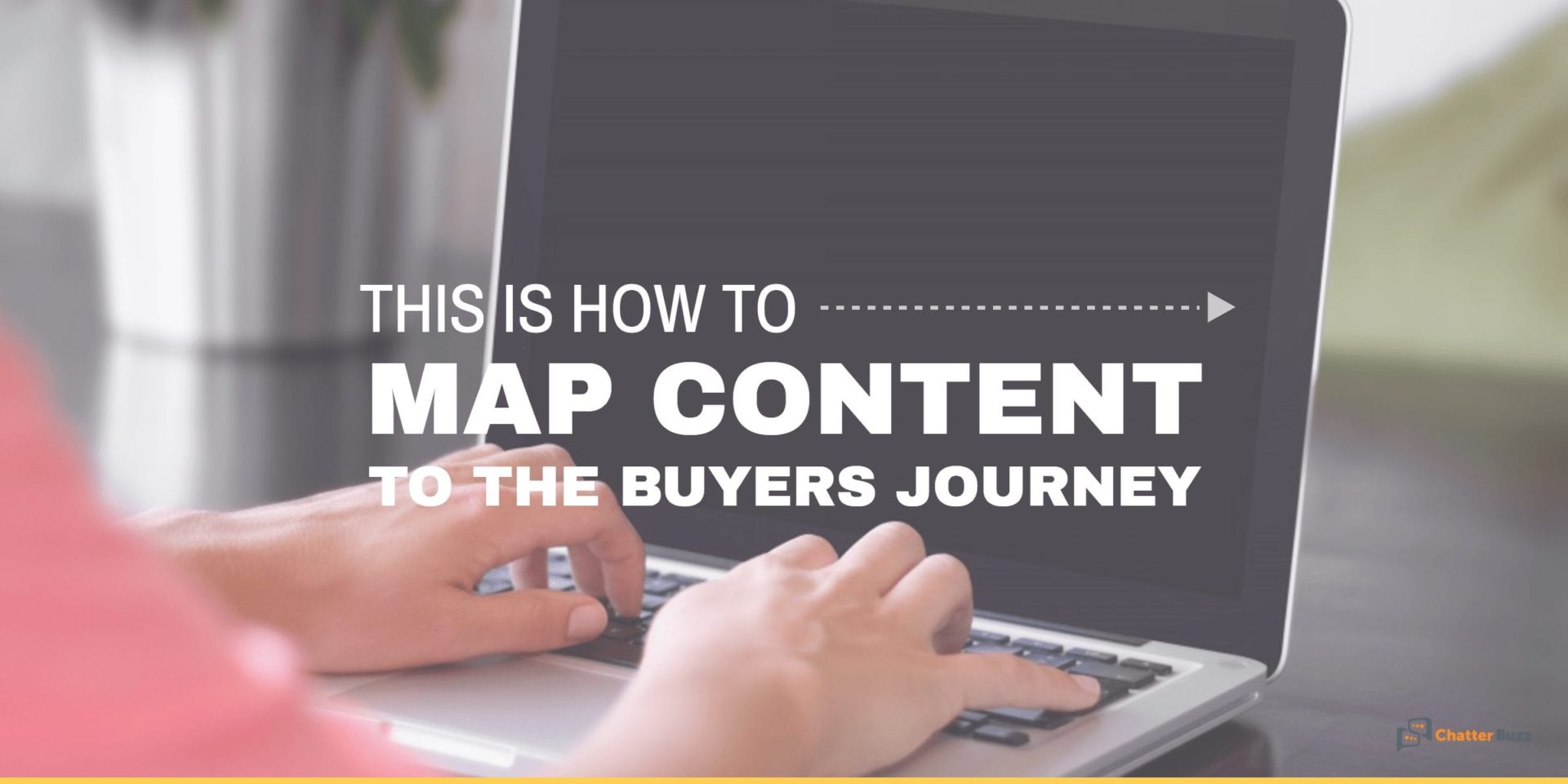Here are the Best Ways to Map Content to Your Customer Journey

I’ll admit that at first, the idea of mapping content to your customer journey seems a bit senseless.
After all, shouldn’t you aim for content to speak to all the visitors of your site?
Don’t you want to market the benefits of your product or service no matter where a lead may be in the buying process?
Not quite.
In fact, seeing a ROI from your content marketing efforts, requires you to do the complete opposite.
You see, as leads move further down your sales funnel, the content they find most valuable changes.
Here’s an example that will illustrate this for you: your team might spend a lot of time creating new, seemingly interesting case studies, blog posts and webinars. You fully expect your audience will appreciate the great information. But because you failed to map your content to the customer journey, the results are less than impressive.
No likes, no comments, no shares or retweets.
The good news is that you’re not alone. Plenty of marketers make the same mistake.
In fact, A new study shows upwards of 89% of B2B marketers use content in their marketing strategy. However, only 22% believe their approach is more than moderately successful.
In my earlier post, I wrote about validating buyer personas in order to best reach your target market.
And today, I want to show you how to use those buyer personas to take your content strategy to the next level.
I’ll explore strategies for identifying buyer intent at each stage of the customer journey so that you can accurately align your content to a more targeted audience for higher conversions.
Ready to get started? Let’s dive in.
Here’s Why You Need to Map Content to the Customer Journey
Tying your content to the different stages of a customer’s buying process is no longer optional. You need a pulse on who to target, where to target them and what content will most resonate to help push leads further down the sales funnel. Without that insight, it’s increasingly difficult to remain competitive.
And that’s not just my opinion. As Andrew Raso highlights over on the HubSpot blog:
“When you don’t have a complete understanding your audience, a disconnect is created between your business and your potential customers. For content marketers, this usually means you’re putting out content that your readers don’t really relate with, which can cause you to lose them.”
Before big data became the primary tool in the modern marketer’s belt, content strategies lacked any real means of measuring success.
Today, marketers armed with customer data from web analytics, CRM records, social media and various other channels can:
- Build profiles of target customers and determine buyer intent at each stage of the customer journey.
- Analyze the types of content that best resonate with each of those customer profiles.
And in doing so, you can turn their content strategy from simple thought leadership into a focused lead conversion machine almost overnight.
49% of marketers are already on the road to mapping their content strategy to the buyer journey. It’s time you do the same. Here’s how.
#1. Drive Awareness Using Third-Party Intent Data
The first stage of your buyer’s journey isn’t just awareness of your solution; it’s also your future customer’s early stages of even understanding they have a problem in need of solving.
You surely know that the likelihood of converting a lead to a paying customer is fairly low at this stage. Their potential for the future looks great, but at this point, their focus is on gathering information.
That’s why you need to position your company as the go-to source for that information. You want to be seen as a trusted source once your prospect takes the next step in the buyer journey and moves further down the sales funnel to the consideration stage.
Third-party intent data can help you do just that. Learn what’s valuable to to your target audience through IP tracking, user opt-in data and shared cookies, all available for purchase from data providers.
Once you know where your prospects go for information and the types of content they prefer, positioning your future campaign efforts for higher visibility becomes less of a guessing game and more like a strategic chess match.
Remember that the format of your content matters just as much as the subject matter. Here are some formats to consider for the awareness stage:
#2. Combine Demographic and Behavioral Data to Focus Content in the Consideration Stage
Once prospects engage with your content, your own first-party demographic and behavioral data becomes the driving force behind what information you share and where you share it.
It’s no secret that the consideration stage can be the most critical for marketers in determining the success of a campaign. According to Pardot, 70% of leads comparing your business against the competition return to Google at least 2-3 times during the course of their research.
That’s why the content you produce at this stage needs to focus on positioning your solution as the best possible for the customer’s problem.
So, let me show you how combining demographic and behavioral data can help you make that happen.
Let’s say you have a lead visiting your site who you’ve identified – through your demographic data – as a decision maker. She has been on your site 3 times in the last week: once from sharing a white paper on Twitter, a second time through a Google keyword search and now the third time through direct traffic. That’s behavioral data.
She’s yet to click your pricing page, so we can safely assume she’s not quite at that buying stage. But, you still want to overcome objections and push this decision maker further down the funnel.
How? For example, by first combining the demographic and behavioral analytics of your decision maker. Then, comparing her profile to historical data for existing customers with the same background. That way, you can forecast the content needed to bridge the gap between consideration and decision.
And it works. 81% of marketers reported seeing the highest ROI from their own first-party data. Putting yours to work in the consideration stage ensures your audience gets the right information at the right time to enable a future buying decision.
These content formats tend to yield the best results at this stage in the process:
#3. Enable Easy Buying Decisions with Predictive Analysis
I’m sure you know this age-old sales adage: time kills all deals.
When you have a lead at the decision stage of the buying process, it’s your responsibility to strip away any barriers and make the decision to purchase an easy one.
You already leveraged historical data to predict the content needed to get your lead from consideration to decision. Now, you can look at the same historical data to forecast what content will convert them from a lead to a customer.
Your average B2B buyer is 57% of the way through the buying process before they look to talk to anyone about a purchase. You can make that remaining 40% of the process seamless and avoid losing the lead to a competitor.
Look how easy Buildertrend makes it for leads to buy from them:
The following types of content tend to work best for enabling buying decisions:
- Free trials
- Demonstrations
- Consultations
- Quotes/Estimates
- Data-Driven Pricing Pages
- Live chat
Wrapping Up
Data makes marketing content to the right audience at the right time a much simpler process.
Take advantage of these strategies and begin to see a much higher return on investment for your content marketing strategy.
Do you need someone to help you achieve your growth goals - then let us help you crush them? Let's chat!
Error: Contact form not found.














